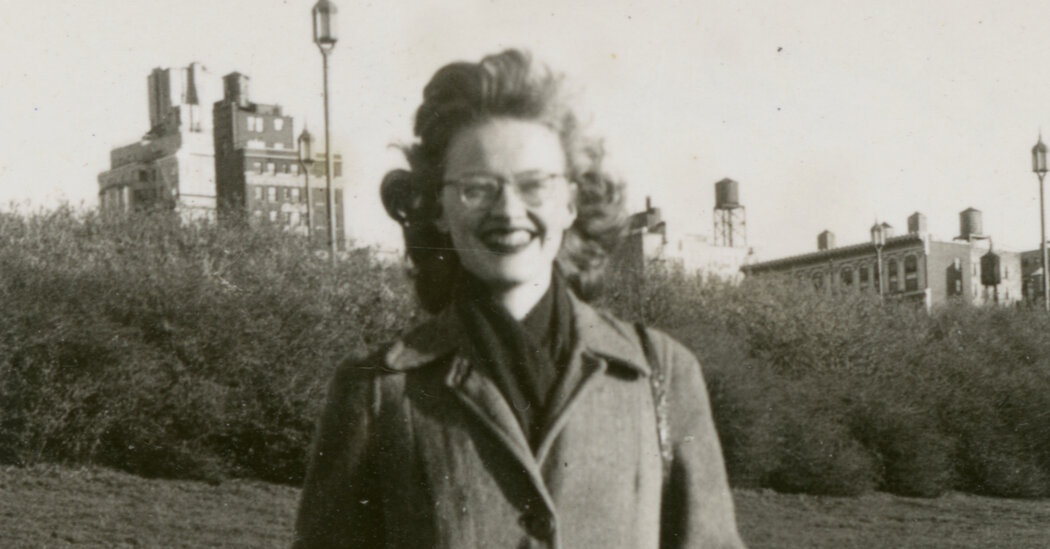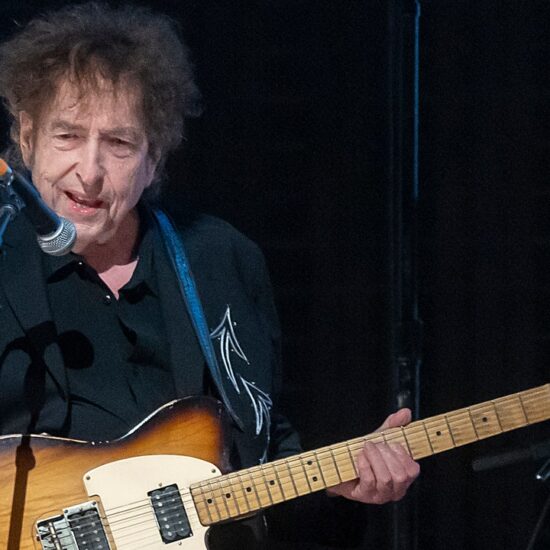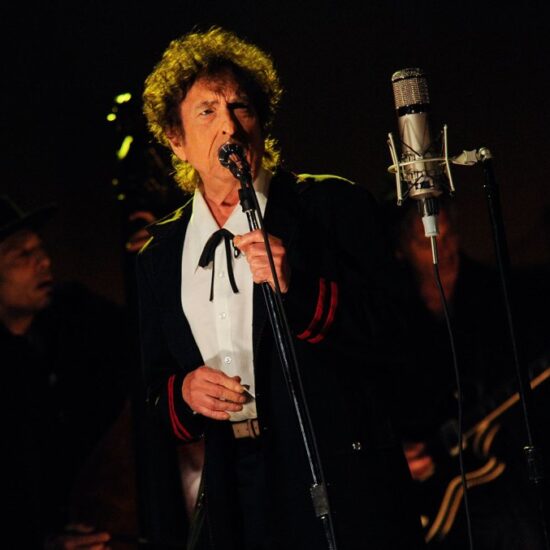
Connie Converse was a pioneer of what’s become known as the singer-songwriter era, making music in the predawn of a movement that had its roots in the Greenwich Village folk scene of the early 1960s.
But her songs, created a decade earlier, arrived just a moment too soon. They didn’t catch on. And by the time the sun had come up in the form of a young Bob Dylan, she was already gone. Not simply retired. She had vanished from New York City, as she eventually would from the world, along with her music and legacy.
It wasn’t until 2004, when an N.Y.U. graduate student heard a 1954 bootleg recording of Ms. Converse on WNYC, that her music started to get any of the attention and respect that had evaded her some 50 years before.
The student, Dan Dzula, and his friend, David Herman, were spellbound by what they heard. They dug up more archival recordings, and assembled the 2009 album, “How Sad, How Lovely,” a compilation of songs that sound as though they could have been written today. It has been streamed over 16 million times on Spotify.
Young musicians like Angel Olsen and Greta Kline now cite Ms. Converse as an influence, and musical acts from Big Thief to Laurie Anderson to the opera singer Julia Bullock have covered her songs.
“She was the female Bob Dylan,” Ellen Stekert, a singer, folk music scholar and song collector told me during my research for a book about Ms. Converse. “She was even better than him, as a lyricist and composer, but she didn’t have his showbiz savvy, and she wasn’t interested in writing protest songs.”
Seventy-five years ago, Ms. Converse was just another young artist trying to make ends meet in the city, singing at dinner parties and private salons, and passing a hat for her performances.
She knew that her songs did not jibe with the saccharine pop of the day. “This type of thing always curdles me like a dentist’s appointment,” she wrote to her brother before an audition at Frank Loesser’s music publishing company, where she predicted what executives would say of her songs: “lovely, but not commercial.”
In January 1961, the same month that Dylan arrived from the Midwest, Ms. Converse left New York for Ann Arbor, Mich., where she reinvented herself as an editor, a scholar and an activist.
In 1974, a week after her 50th birthday, she disappeared and was never seen again.
Ms. Converse lived in New York from 1945 to 1960, and though she was intensely private, she kept a diary, scrapbooks and voluminous correspondence that were left behind after she drove away for good, offering clues about what the Manhattan chapter of her life was like. Here are some of the neighborhoods, venues and sites around the city that provided the musician with a backdrop for her short but trailblazing stint as a songwriter.
The 1940s: Bohemians of the Upper West Side
Riverside Park
In 1944, after dropping out of Mount Holyoke College in Massachusetts, Ms. Converse moved to New York. Her first job was at the American Institute of Pacific Relations, where she edited and wrote articles about international affairs. “I am struck by the breadth of the topics she covered,” said the contemporary international relations scholar Michael R. Anderson, who calls her writing and reporting “remarkable.”
She lived on the Upper West Side. The image of her in Riverside Park, above, was found in an old filing cabinet that belonged to the photographer’s widow. It is one of the first known images of Ms. Converse in New York.
The Lincoln Arcade
Some of Ms. Converse’s closest friends lived and hung around the bohemian enclave known as the Lincoln Arcade, a building on Broadway between West 65th and 66th Street. With a reputation as a haven for struggling artists, it had been home to the painters Robert Henri, Thomas Hart Benton and George Bellows, the last of whom had lived there with the playwright Eugene O’Neill.
The group was a hard-drinking lot, given to holding court late at night. One surviving member of that crew, Edwin Bock, told me that Ms. Converse would often be clattering away at a typewriter, at a remove from the rest, though sometimes she did things he found shocking, like climbing out the front window well past midnight to stand on a ledge, several stories above the street.
The 1950s: Making Music in the Village and Beyond
23 Grove Street
Ms. Converse lost her job when the institute landed in the cross hairs of the anti-Communist House Un-American Activities Committee. Sometime late in 1950, she moved to the West Village and began a new phase of her life as an aspiring composer and performer.
She bought a Crestwood 404 reel-to-reel tape recorder and began making demos of herself singing new songs as she wrote them. It was here, while living alone in a studio apartment at 23 Grove Street that Ms. Converse wrote almost all of her “guitar song” catalog (including everything on “How Sad, How Lovely”).
The Village at that time “was the Left Bank of Manhattan,” the writer Gay Talese told me, and it had “whiffs of the future in it” in terms of its permissiveness about lifestyle choices. Nicholas Pileggi, a writer and producer, suggested that given her address, Ms. Converse, a loner, would have had no problem hanging out by herself at Chumley’s, a former speakeasy.
The upstart book publisher Grove Press was also just down the block, and she was close to The Nut Club at Sheridan Square, where jazz musicians often played, as well as the more respectable Village Vanguard.
Grand Central
Her first and only television appearance was in 1954, on the “The Morning Show” on CBS (hosted that year by Walter Cronkite), though how Ms. Converse secured the appearance and what she played and talked about may never be known (shows at this time were broadcast live; no archival footage exists). Because the program was staged in a studio above the main concourse at Grand Central and shown live on a big screen in the hall, everyone bustling through the station that morning could have looked up and caught the young musician’s one and only brush with success.
Ms. Converse was extremely close to her younger brother, Phil. When he visited her in the city for the first time, Ms. Converse described the reunion in her irregularly kept diary, noting that the two “met like strangers at Grand Central, and fell to reminiscing over oysters.”
In 1955, Ms. Converse took up residence at 605 West 138th Street, in Harlem, a block away from Strivers’ Row. There, she shared a three-bedroom flat with her older brother, Paul, his wife, Hyla, and their infant child, P. Bruce, a situation she called “a cost-saving measure.” The new apartment had an upright piano, which Ms. Converse used to compose an opera (now since lost), a series of settings for poems by writers like Dylan Thomas, E.E. Cummings and Edna St. Vincent Millay, and a song cycle based on the myth of Cassandra who, according to Greek mythology, was given the gift of prophesy and then cursed to be never understood.
Circle in the Square
An avid theatergoer, Ms. Converse attended Jose Quintero’s 1956 revival of “The Iceman Cometh,” which made Jason Robards a star and effectively launched the Off-Broadway movement. “Did I mention that I saw an in-the-round production of ‘The Iceman Cometh’ last month?” she wrote to Phil and his wife, Jean, that October. “Some four and a half hours of uncut O’Neill, but only the last 15 minutes found me squirming in my seat.”
The Blue Angel
At this erstwhile nightclub on East 55th Street, unique at the time for being desegregated, Ms. Converse met the cabaret singer Annette Warren, who expressed interest in covering Ms. Converse’s songs, and who would make at least two of them, “The Playboy of The Western World” and “The Witch and the Wizard,” staples of her show for decades to come.
1960: The Lost Tape; Goodbye, New York
National Recording Studios
National Recording Studios, at 730 Fifth Avenue between West 56th and 57th Streets, had been open for only a year when Ms. Converse showed up in February 1960 to record an album. It was a solo session that, because she did just one or two takes of each tune, only took a few hours. The recording was a rumor until 2014, when Phil Converse unearthed a reel of it in his basement. An adman who was a fan of Ms. Converse’s music had procured the recording session for her for free. That album, the only one she made, remains unreleased.
Ms. Converse closed the circle of her peripatetic Manhattan existence by moving back to where she’d started: the Upper West Side. This time, she lived in a brownstone on West 88th Street, a half block from Central Park. This was her last known New York address; by 1961, she was gone.
Her music, mostly made in isolation or at small gatherings, was nearly lost but for the efforts of her brother Phil, who archived what he could; David Garland, who played her music on WNYC in 2004 and 2009; and Dan Dzula and David Herman, the students who, decades later, introduced her work to a new generation.
“The first time I played a Connie Converse song for a friend, she sat silently and cried,” Mr. Dzula said. “From that moment I knew Connie’s magic would reach at least a few more people in a deeply personal and special way.”
He added: “Could I have envisioned her blowing up like this when we first put out the record? Absolutely not. But also, yeah, kind of!”
Howard Fishman is the author of the new book “To Anyone Who Ever Asks: The Life, Music, and Mystery of Connie Converse.”













